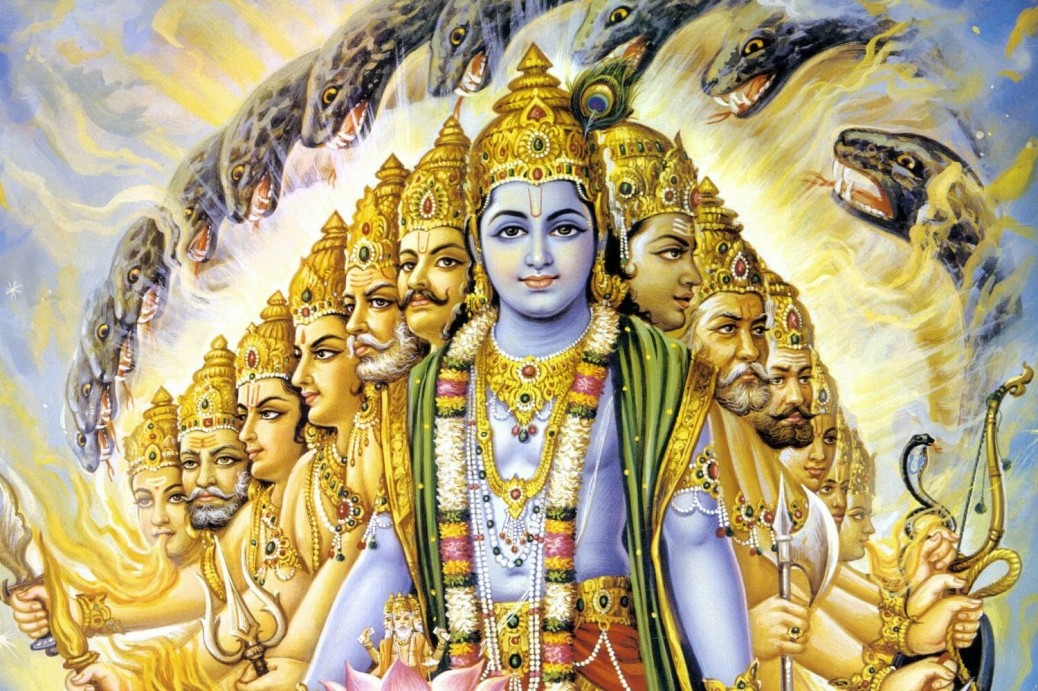Renounce Thoughts – In Gita Verse 18.20 That knowledge by which one undivided spiritual nature is seen in all living entities, though they are divided into innumerable forms, you should understand to be in the mode of goodness.
In the Bhagavad Gita, Verse 18.20, Krishna imparts profound wisdom to Arjun, emphasising the importance of perceiving the one undivided spiritual nature within all living entities, despite their myriad forms. This knowledge, Krishna asserts, is Satvik, or in the mode of goodness. He underscores that true renunciation involves renouncing thoughts, not actions.
To attain this elevated state of consciousness, it is imperative to become increasingly sensitive in your actions. Action should not be forsaken; rather, it should be fully embraced as the conduit through which you engage with reality and allow reality to engage with you. The fundamental principle here is to renounce thoughts, not actions.
This process demands utmost delicacy and subtlety, for any misstep can lead to profound ignorance. While it may seem straightforward to renounce thoughts, doing so without falling into a state of unconsciousness is a significant challenge. In deep sleep, for instance, thoughts cease, but consciousness also fades, leaving one in a state of unconsciousness.
The key challenge lies in renouncing thoughts without succumbing to a coma-like state. Falling unconscious is not the path to reality; it merely leads to sleep, where the conscious mind merges into the unconscious. The true goal is the reverse: for the unconscious to merge into the conscious, leading to enlightenment. If the conscious mind falls into the unconscious, one experiences a coma; if the unconscious merges into the conscious, one attains enlightenment, becoming a Buddha or a Sosan.
It is relatively easy for the conscious mind to fall into the unconscious, as it constitutes only a small fragment of one’s being. This phenomenon occurs in states of intoxication, such as alcohol consumption or drug use, where the conscious mind succumbs to the unconscious. These experiences may temporarily halt thoughts and induce dreams, but they do not lead to reality.
Renouncing thoughts must be achieved not by becoming unconscious but by becoming more conscious, alert, and aware. The energy that fuels thinking should be redirected into consciousness, fostering a state of witnessing. This involves observing the thought process without becoming entangled in it, akin to a watcher on a hill, observing and seeing.
Krishna emphasises that by deeply contemplating and penetrating words, they eventually dissipate, creating a gap or interval. This is akin to the disappearance of clouds, revealing the clear blue sky. In this state, one becomes more alert and sensitive, not comatose. More unconsciousness is transformed into consciousness, resulting in a heightened state of awareness where every action is imbued with divineness.
When a Buddha touches someone, the touch is profoundly different. Unlike a casual touch, which may lack warmth or vitality, a Buddha’s touch is a complete merger, an opening through which energy flows. It is alive, warm, and trusting. In that moment, the Buddha’s entire being is concentrated in the touch, creating a transformative experience for the recipient.
Similarly, when a Buddha looks at someone, his gaze is total and undivided. Unlike ordinary individuals who may be distracted by thoughts, a Buddha’s eyes are like a burning sun, penetrating directly to the heart. This gaze can create a profound impact, leaving the recipient forever changed.
Krishna elucidates that when consciousness and action become a unified totality, the resulting action is in the mode of goodness. This state of being, where consciousness and action are seamlessly integrated, represents the highest form of spiritual practice.
Tags: Renounce Thoughts




